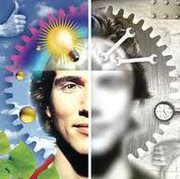Anime and carton words
In Japan, the term anime does not specify an animation's nation of origin or style; instead, it serves as a blanket term to refer to all forms of animation from around the world.
English-language dictionaries define anime as "a Japanese style of motion-picture animation" or as "a style of animation developed in Japan".
In English, anime, when used as a common noun, normally functions as a mass noun (for example: "Do you watch anime?", "How much anime have you collected?"). However, in casual usage the word also appears as a count noun. Anime can also be used as a suppletive adjective or classifier noun ("The anime Guyver is different from the movie Guyver").
Non-Japanese works that borrow stylization from anime are commonly referred to as "anime-influenced animation (refers to non-Japanese works of animation that emulate certain aspects of the visual style of anime.)" but it is not unusual for a viewer who does not know the country of origin of such material to refer to it as simply "anime"
If you searched the internet also you will find a lot of people who says that there is no difference between both anime and cartoon but in my opinion and also I found it once on the internet……
Anime: represents real life somehow I mean if somebody dead that means he dead and he will not come back again (as tom and jerry) - it aims for good story not only fun you can find anime that doesn’t contain any comedy situations (as 12 kingdom).
Cartoon: represents virtual life that aims for laugh even if there are unbelievable situations (as Tom and Jerry) you can find cartoon characters stretches and shrinks and so on.
History
Anime began at the start of the 20th century, when Japanese filmmakers experimented with the animation techniques also pioneered in France, Germany, the United States, and Russia. The oldest known anime in existence first screened in 1917 – a two-minute clip of a samurai trying to test a new sword on his target, only to suffer defeat.
By the 1930s animation became an alternative format of storytelling to the live-action industry in Japan. But it suffered competition from foreign producers and many animators, such as Noburō Ōfuji ( Japanese film director) and Yasuji Murata ( pioneering animator who helped develop the art of anime in Japan) still worked in cheaper cutout not cel animation, although with masterful results.
Cutout animation Cel animation
watch video about cutout animation
Other creators, such as Kenzō Masaoka and Mitsuyo Seo, nonetheless made great strides in animation technique, especially with increasing help from a government using animation in education and propaganda.
The first talkie anime was Chikara to Onna no Yo no Naka, produced by Masaoka in 1933.
The first feature length animated film was Momotaro's Divine Sea Warriors directed by Seo in 1945 with sponsorship by the Imperial Japanese Navy.
The success of The Walt Disney Company's 1937 feature film Snow White and the Seven Dwarfs influenced Japanese animators. In the 1960s, manga artist and animator Osamu Tezuka adapted and simplified many Disney animation-techniques to reduce costs and to limit the number of frames in productions. He intended this as a temporary measure to allow him to produce material on a tight schedule with inexperienced animation-staff.
The 1970s saw a surge of growth in the popularity of manga – many of them later animated as death note – special A – narto – anuyosha - ……etc.
Japan and animation
Japan is a great animation world, a paradise for “anime” enthusiasts. Today, more and more world anime fans are flocking to Japan for an animation pilgrimage.
But now Japan became more creative than before it didn’t stop on creating animated movies but also now there is life concerts with animated singer
World and anime
In the UK, many video shops will classify all adult-oriented animated videos in the "Anime" section for convenience, regardless of whether they show any stylistic similarities to Japanese animation. No evidence suggests that this has led to any change in the use of the word.
Programs to make anime characters
MikuMiku Dance
Anime Studio
Etc….






















